Why does the chestnut not bloom and how to deal with it?
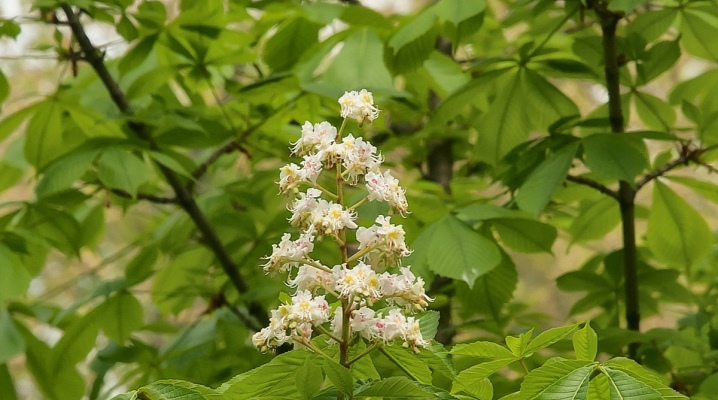
Not only in warm regions, but also in central Russia, with the arrival of spring, tall handsome chestnuts bloom. It should be noted that in regions with a warm climate, this plant blooms most intensively and abundantly. Chestnut has adapted well to life in the conditions of Russian winters, its roots do not freeze, which makes it possible for the tree not only to please us with its flowering every year, but also to bear fruit. The seeds of chestnuts, adapted to winter temperatures below zero, are capable of producing plants that are even more resistant to cold weather. On the territory of Russia, chestnuts are used as an ornamental culture; they are planted in gardens, squares and parks to decorate the landscape.
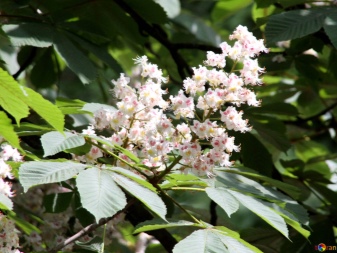

When should bloom start?
The perennial plant has taken root well in an urban environment, it helps to cleanse the air masses from impurities of harmful industrial and transport pollution, and also retains dust with its crown. The chestnut is most widespread in regions of Russia with a warm climate, but it can also be found in regions with a temperate climate, where the plant is planted for landscaping urban areas. The resistance of the chestnut to smoke and gas contamination makes it an irreplaceable plant that not only improves the ecological situation, but also decorates the green space. Often chestnuts can be found near highways, in factories, in parks, near schools, hospitals.
Growing up, the tree acquires a very large size, so it will be cramped in areas limited in area. But, despite this, the owners of private rural estates willingly plant chestnuts in their farmstead. A tall tree eventually becomes a highlight of the landscape and attracts attention with its height.
The most decorative period for chestnuts is the spring season: at this time the plant blooms.
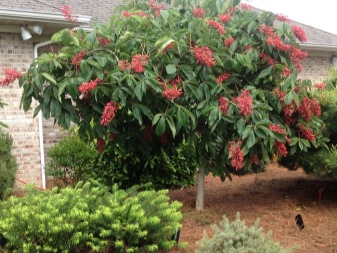

The flowers of the plant are quite large, reaching up to 2–2.5 cm in diameter. They are pinkish-white in color and are collected in beautiful panicle inflorescences, which in appearance resemble pyramidal candles about 30 cm high. Blooming chestnut is a magnificent sight. The flowering period is at least 25 days.
The tree blooms in May, with the arrival of the first warm days. Over time, in place of multiple flowers, fruits are formed in the form of bolls, in which the pericarp is covered with greenish thorns. Inside the capsules are divided into separate chambers, where large reddish-brown seeds ripen. 1 box can contain from 1 to 3 seeds.
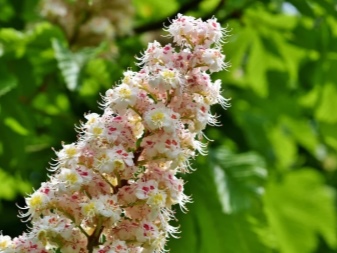
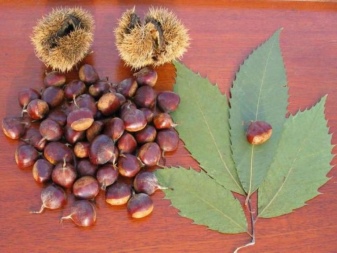
What is the reason?
An adult chestnut begins to bloom if the weather is warm for at least 2-3 days in May. Despite its unpretentiousness and density of the green crown, a tree growing in a summer cottage may suddenly stop flowering or never start it at all. Chestnut does not bloom in the country for a number of reasons.
- Close fit. To create the most favorable conditions for the development and growth of the chestnut, it is necessary to allocate an area of at least 3 m 2. If we neglect these sizes and plant the seedlings more closely to each other, the plants will compete for light and nutritional components, while they will no longer have the strength for flowering ... In the process of such competition, weaker specimens will perish, giving way to strong and hardy brethren.In order for chestnuts to bloom annually, experienced gardeners recommend leaving a distance of at least 6 m between trees, otherwise the risk that the plant will stop blooming remains high.
- Lack of heat. In the process of adaptation, thermophilic chestnuts began to have the ability to bloom even on cool days in May, but trees of edible varieties still require air warming up to 16-18 ° C. One of the reasons for poor flowering or its complete absence is the lack of adaptation of the plant to the temperature regime. With an obvious lack of heat, the plant is not able to please us with its inflorescences.
- Young age. In order for a tree to start blooming and bearing fruit, it needs to reach a certain age of maturity. For example, in horse chestnut, flowers appear only 10 years after the tree is planted, and other varieties need to reach 15 years of age for flowering.
- Lack of moisture. Chestnut is a hardy plant, but at the same time it is very sensitive to a sufficient amount of moisture, and if there is a lack of water, the tree begins to grow poorly and stops flowering. The lack of moisture manifests itself in the fact that the chestnut buds are formed, but the flowers from them do not bloom. Such a situation may arise if the precipitation is no more than 1000 mm, and the humidity of the ambient air will be no more than 30%.
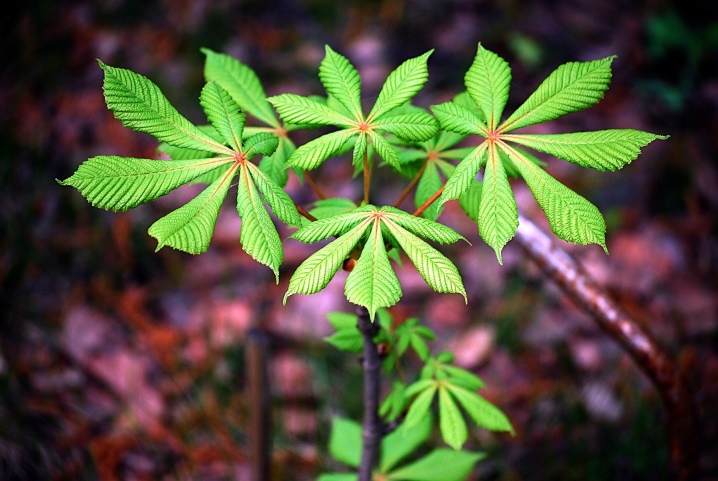
So that the chestnuts can bloom every year, the composition of the soil on which they grow is also an important factor. A low-acid composition containing a small amount of sand is most favorable for the plant.
During budding and flowering, the tree needs an additional influx of nutrients. Mullein solution and urea are used as fertilizers.

What to do?
A tall chestnut tree has a spreading and dense crown, for favorable growth it needs an abundance of sunlight, therefore, before planting such a plant in the country, you should choose the right place for it, taking into account some important points.
- Space. The chestnut root system is highly developed and requires a lot of space to supply the plant with sufficient nutrients. For this reason, the tree should not be planted near buildings and near horticultural crops.
- Illumination. The tree loves good sunlight, so the plant will feel worse in the shade and may not bloom.
- Lack of drafts. Chestnut grows well in areas where there are no sharp gusts of wind and drafts. These conditions are necessary for the tree in order to avoid deformation at a young age. A mature tree also does not like abrupt movements of cold air masses, this has a bad effect on its budding.
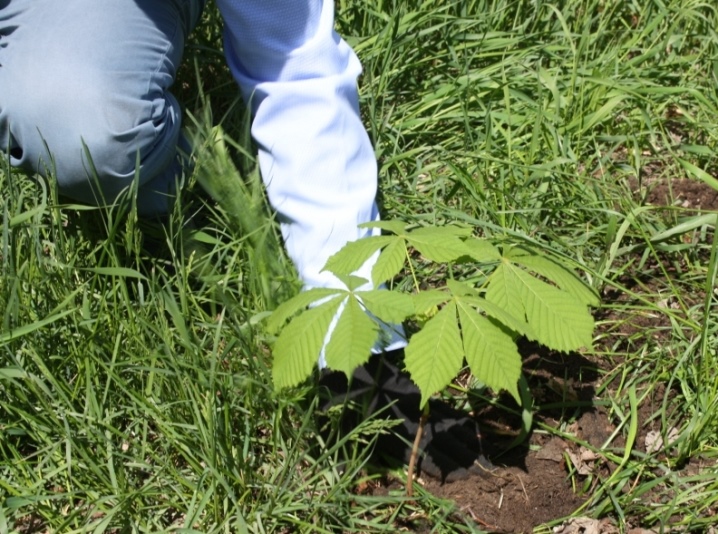
For normal growth and development, the tree needs to provide good drainage, which will prevent stagnation of excess moisture near the roots. Loose soil substrates are well suited for this purpose: loamy soils mixed with sand, or black soil. The acidity of the soil is best to choose neutral or slightly alkaline, the soil should be loose and moist, chestnut bloom may not occur on dense soils.
In regions with a hot climate, chestnuts often suffer from high temperatures - the leaves of the plants burn, curl and fall off. In heat and dry air, peduncles can also suffer: the buds of multiple flowers may not form, or they do not open on formed inflorescences. In this case, the chestnut should be planted in slightly shaded areas of the territory.
A young chestnut seedling grows very quickly from the first days. If the tree is not transplanted, then in the first 4 years it grows up to 1 m, at 10 years of age the height will already be 3 m. The first inflorescences of a seedling will appear at 9 or 10 years of age, and already at 12-14 years old the chestnut will bloom abundantly and long-lasting.

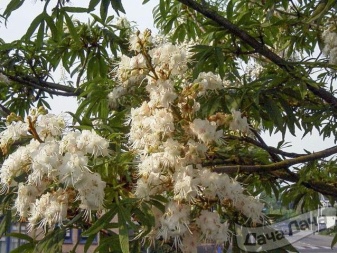
In order for the plant to bloom annually, it is provided with care, which consists in timely and correct watering. In the first 2-3 years, a young seedling is watered moderately so that a clod of earth near the roots is always moist. Over time, the root system of the tree will develop and will be able to provide itself with moisture and nutrients on its own, without requiring any additional care.
The principle of caring for a flowering plant is simple: the chestnut can tolerate small periods of drought. But in order not to lose the opportunity to observe flowering, the tree in a difficult period must be supported by additional watering. For each square meter of the crown in the projection, you will need to take 10-12 liters of water.
It is especially important to maintain young chestnuts during a drought, since their root-forming system is still not strong enough and is buried in the soil.
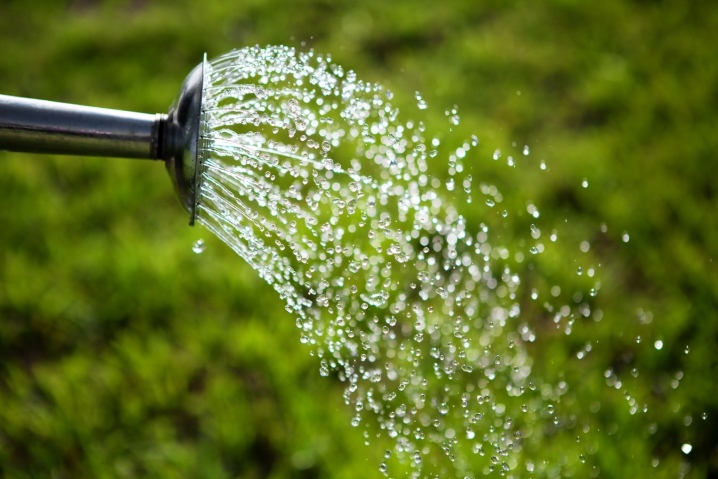
Fertilization and soil mulching contribute to the abundant flowering of the chestnut. In addition, the crown will also require some attention and care: every year it is recommended to remove dry or damaged branches, as well as lateral shoots on the trunk and shoots. Taking care of the chestnut, by pruning, you can get the shape of a standard tree, which has a powerful central trunk.
For better growth and nutrition in spring, chestnuts can be fed with organic fertilizers. For this, a solution is prepared from a mullein. For 10 liters of water take 15 g of urea and 1 kg of cow dung. Such additional nutrition will become a stimulant not only for growth, but also for the formation of numerous inflorescences. In the autumn period, the tree also needs to be fed, for this, 15 g of nitroammophoska are added to the indicated ingredients.
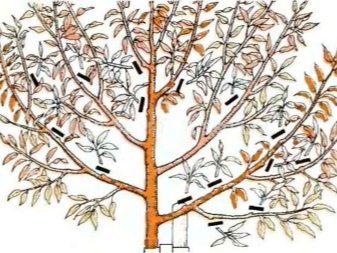
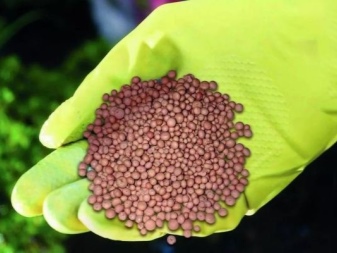
For information on how to grow chestnuts, see the next video.



































































The comment was sent successfully.